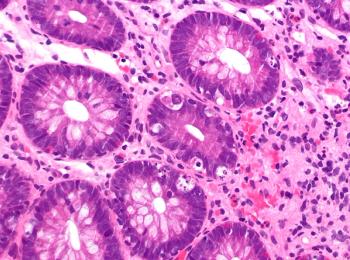
Copanlisib May Benefit Patients with Indolent Malignant B-cell Lymphomas
At the 2017 ASH annual meeting, investigators presented data on the pharmacodynamic effects of copanlisib in patients with NHL and solid tumors that showed dose-dependent on-target activity with the drug.
Preliminary data are suggesting that copanlisib, a novel, potent, intravenous, pan-class I PI3K inhibitor, may be effective in patients with non-Hodgkin lymphoma (NHL) and solid tumors. Investigators presented these findings at the 59th American Society of Hematology (ASH) Annual Meeting and Exposition, held December 9-12 in Atlanta, Georgia, showing this agent may help improve tumor responses.
Copanlisib has predominant activity against PI3K-α and PI3K-δ isoforms and has previously demonstrated robust objective tumor responses in patients with indolent NHL treated at a fixed dose of 60 mg (0.8 mg/kg). In this current study, the team examined the dose-dependent pharmacodynamic effects of copanlisib relative to plasma exposure in patients with NHL and solid tumors.
The investigators found evidence of target modulation with copanlisib, including the inhibition of pAKT-S473 and pS6 in tumor tissue. The study also showed inhibition of pAKT in PRP and a reduction of FDG-PET tracer uptake; however, there was an increase in plasma glucose, insulin, and C-peptide levels.
The study demonstrated a dose-dependency for all pharmacodynamic parameters, except for pAKT in surrogate tissue. Copanlisib at 0.8 mg/kg was found to be more effective at reducing tumor pAKT-S473 and pS6 levels compared with 0.4 mg/kg. “The sharp difference in target modulation in terms of reductions in pAKT and pS6 levels at the 0.8 mg/kg dose compared to the 0.4 mg/kg dose in paired tumor biopsies was striking. This dose dependency was consistent across the entire study and supports the approved dosing recommendations,” said study investigator Franck Morschhauser, MD, PhD from the Hospitalier Régional Universitaire de Lille Clinical Hematology Department in Lille, France.
For this current investigation, 63 patients with NHL or advanced/refractory solid tumors received copanlisib as a 1-hour intravenous infusion in 28-day cycles on an intermittent weekly schedule (3 weeks on, 1 week off) at a dose of 0.8 mg/kg or 0.4 mg/kg. The study showed blood glucose levels peaked 5 to 8 hours post-infusion and subsequently declined to baseline levels within 24 hours. The findings were similar for insulin levels and C-peptide.
The most common adverse events (AEs) were hyperglycemia (50.8%) and hypertension (42.9%). However, Dr. Morschhauser said both were dose-dependent, transient, infusion-related, and self-limiting. Other AEs (> 25%) included nausea and fatigue (38.1%), diarrhea (33.3%), and anemia (28.6%).
“The safety profile of copanlisib was manageable and consistent with previous phase I and II studies. Objective tumor responses were primarily seen in the NHL cohort, and 7 of the 8 patients with responses were treated at the 0.8 mg/kg dose. These results provide a direct demonstration of on-target effects of PI3K inhibition with copanlisib and strongly support use of the 0.8 mg/kg dose (equivalent to approximately 60 mg absolute dose),” Dr. Morschhauser told OncoTherapy Network.
Newsletter
Stay up to date on recent advances in the multidisciplinary approach to cancer.

















































































